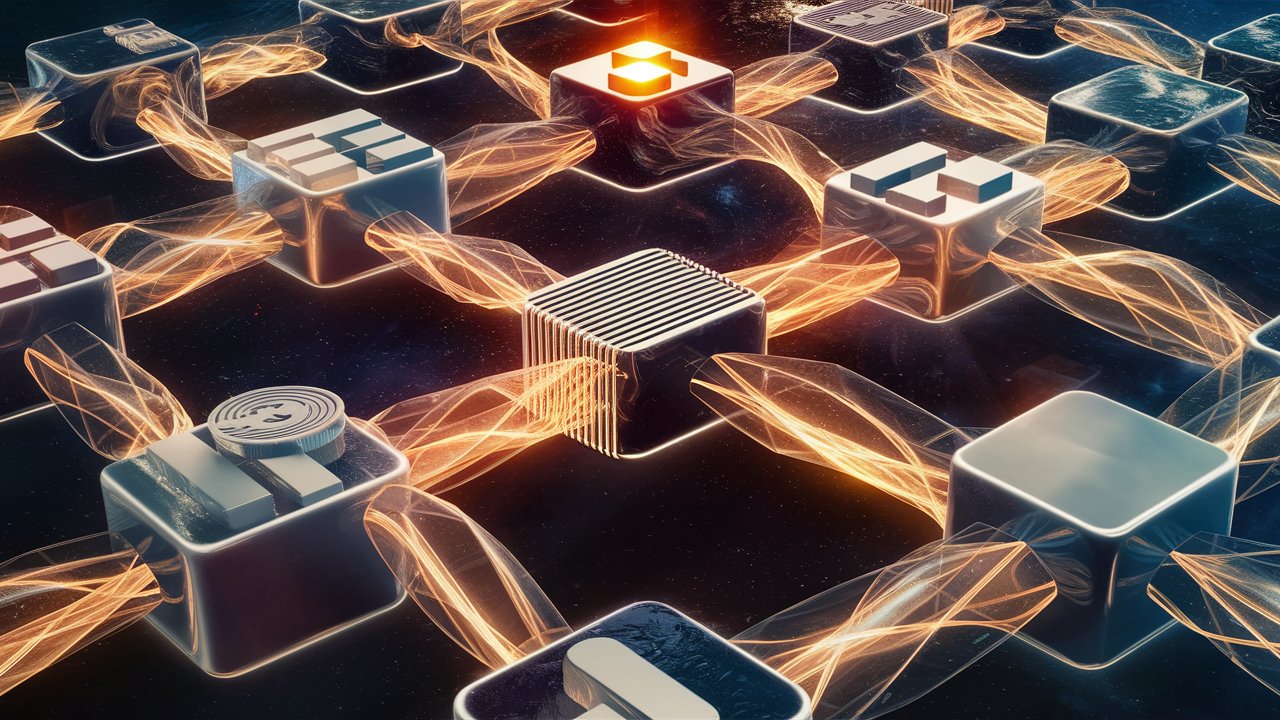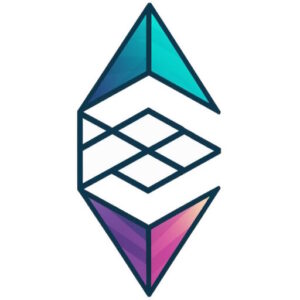Ethereum mining has become a popular way for individuals to participate in the cryptocurrency market and potentially earn a profit. As one of the largest cryptocurrencies by market capitalization, Ethereum offers a unique opportunity for miners to contribute to the network and be rewarded for their efforts. In this article, we will explore what Ethereum mining is, how it works, the history of Ethereum mining, the benefits of mining Ethereum, how to get started, the mining process, choosing the right hardware, maximizing profitability, risks and challenges, a comparison with Bitcoin mining, and predictions for the future of Ethereum mining.
What is Ethereum Mining?
Ethereum mining is the process of validating and adding new transactions to the Ethereum blockchain. Miners use their computational power to solve complex mathematical problems that secure the network and ensure the integrity of transactions. In return for their work, miners are rewarded with newly minted Ether (ETH), the native cryptocurrency of the Ethereum network.
To understand how Ethereum mining works, it’s important to grasp the concept of blockchain technology. A blockchain is a decentralized ledger that records all transactions made on a network. In the case of Ethereum, this ledger is maintained by a network of computers called nodes. Miners play a crucial role in this network by verifying transactions and adding them to blocks. These blocks are then added to the blockchain in a sequential order.
The History of Ethereum Mining
Ethereum mining began in 2015 when the Ethereum network was launched by Vitalik Buterin and his team. Initially, mining was done using traditional central processing units (CPUs), but it quickly became apparent that CPUs were not efficient enough for the task. Miners soon transitioned to using graphics processing units (GPUs), which offered significantly higher computational power.
Over time, as more miners joined the network, competition increased, and mining difficulty rose. This led to the development of specialized hardware known as application-specific integrated circuits (ASICs), which were specifically designed for mining cryptocurrencies. ASICs offered even higher computational power and energy efficiency compared to GPUs, but they also came with a higher price tag.
The Benefits of Mining Ethereum
There are several benefits to mining Ethereum, both financial and non-financial. From a financial perspective, mining Ethereum can be a profitable venture. Miners are rewarded with newly minted Ether for their work, and if the price of Ether increases, the value of their rewards also increases. Additionally, miners can earn transaction fees for including transactions in blocks.
Mining Ethereum also supports the Ethereum network by securing the blockchain and ensuring the integrity of transactions. Without miners, the network would be vulnerable to attacks and fraudulent activities. By participating in mining, individuals contribute to the decentralized nature of the network and help maintain its security.
Furthermore, mining Ethereum provides an opportunity to learn about blockchain technology and gain a deeper understanding of how cryptocurrencies work. It allows individuals to become more familiar with concepts such as proof of work, consensus algorithms, and decentralized finance (DeFi). This knowledge can be valuable in the rapidly evolving world of blockchain technology.
How to Get Started with Ethereum Mining
Getting started with Ethereum mining requires a few essential steps. First, you will need to set up a wallet to store your mined Ether. There are various types of wallets available, including hardware wallets, software wallets, and online wallets. It’s important to choose a wallet that offers a good balance between security and convenience.
Next, you will need to join a mining pool. Mining pools are groups of miners who combine their computational power to increase their chances of successfully mining blocks. By joining a mining pool, you can earn more consistent rewards compared to solo mining. It’s important to choose a reputable mining pool with a good track record and reasonable fees.
Once you have set up your wallet and joined a mining pool, you will need to choose mining software. There are several mining software options available, each with its own features and compatibility. Some popular mining software options include Claymore’s Dual Miner, Ethminer, and PhoenixMiner. It’s important to choose software that is compatible with your hardware and offers good performance.
Understanding the Ethereum Mining Process
The Ethereum mining process involves solving complex mathematical problems to validate transactions and add them to the blockchain. Currently, Ethereum uses a proof-of-work (PoW) consensus algorithm, which requires miners to solve a cryptographic puzzle known as a hash function. The first miner to solve the puzzle and find a valid solution is rewarded with Ether.
However, Ethereum is in the process of transitioning to a proof-of-stake (PoS) consensus algorithm with the upcoming Ethereum 2.0 upgrade. In a PoS system, validators are chosen to create new blocks based on the number of coins they hold and are willing to “stake” as collateral. This transition aims to improve scalability, energy efficiency, and security.
Block rewards and difficulty are also important aspects of the Ethereum mining process. Currently, miners are rewarded with 2 ETH for each block they successfully mine. However, this reward is expected to decrease over time as part of Ethereum’s monetary policy. Additionally, mining difficulty adjusts dynamically based on the computational power of the network to ensure that blocks are mined at a consistent rate.
Choosing the Right Hardware for Ethereum Mining
Choosing the right hardware is crucial for successful Ethereum mining. The two main types of hardware used for mining are graphics processing units (GPUs) and application-specific integrated circuits (ASICs).
GPUs are versatile and widely used for mining Ethereum due to their high computational power and flexibility. They can handle complex mathematical calculations required for mining and can be easily upgraded or repurposed for other tasks. However, GPUs consume more power compared to ASICs and can be expensive to purchase.
ASICs, on the other hand, are specifically designed for mining cryptocurrencies and offer higher computational power and energy efficiency compared to GPUs. They are optimized for a specific algorithm, such as Ethereum’s Ethash algorithm, and can mine Ether at a much faster rate. However, ASICs are expensive and have limited use beyond mining.
When choosing hardware, it’s important to consider cost considerations such as the initial investment, electricity costs, and potential resale value. It’s also important to consider the availability of hardware, as popular mining hardware can often be in high demand and difficult to obtain.
Maximizing Your Profit with Ethereum Mining
To maximize profitability with Ethereum mining, there are several strategies you can employ. One strategy is to optimize your mining rig for maximum efficiency. This can involve fine-tuning your hardware settings, such as undervolting your GPUs or optimizing your ASICs for maximum hash rate.
Another strategy is to join a mining pool. By pooling your computational power with other miners, you increase your chances of successfully mining blocks and earning rewards. Mining pools typically charge a small fee for their services, but the increased consistency of rewards can outweigh the fees.
Managing electricity costs is also crucial for maximizing profitability. Mining can consume a significant amount of electricity, especially if you have multiple mining rigs running 24/7. It’s important to consider the cost of electricity in your area and find ways to reduce energy consumption, such as using energy-efficient hardware or optimizing your mining software settings.
Risks and Challenges of Ethereum Mining
While Ethereum mining can be profitable, it also comes with its fair share of risks and challenges. One major risk is the volatility of cryptocurrency prices. The price of Ether can fluctuate significantly, which can impact the profitability of mining. If the price drops below the cost of electricity and other expenses, mining may no longer be profitable.
Security risks are another concern in the world of cryptocurrency mining. Miners are often targeted by hackers and scammers who try to steal their mining rewards or gain unauthorized access to their mining rigs. It’s important to implement strong security measures, such as using secure wallets, enabling two-factor authentication, and regularly updating your mining software.
Regulatory challenges are also a consideration for Ethereum miners. The legal and regulatory landscape surrounding cryptocurrencies is constantly evolving, and miners may face restrictions or additional requirements depending on their jurisdiction. It’s important to stay informed about the latest regulations and comply with any legal obligations.
Ethereum Mining vs. Bitcoin Mining: Which is More Profitable?
When comparing Ethereum mining to Bitcoin mining, there are several factors to consider. While both cryptocurrencies use a proof-of-work consensus algorithm, they have different mining algorithms and reward structures.
Ethereum uses the Ethash algorithm, which is memory-intensive and designed to be ASIC-resistant. This means that Ethereum mining can still be done using GPUs, making it more accessible to individual miners. Bitcoin, on the other hand, uses the SHA-256 algorithm, which is more suited for ASIC mining.
In terms of profitability, it’s difficult to make a definitive comparison as it depends on various factors such as the price of each cryptocurrency, mining difficulty, and electricity costs. Historically, Bitcoin has had higher prices and mining rewards compared to Ethereum. However, Ethereum has seen significant price increases in recent years and has the potential for higher returns.
Ultimately, the choice between Ethereum mining and Bitcoin mining depends on individual circumstances and preferences. It’s important to consider factors such as hardware availability, electricity costs, and potential profitability when making a decision.
The Future of Ethereum Mining: Trends and Predictions
The future of Ethereum mining is an exciting topic with several trends and predictions. One major development is the upcoming Ethereum 2.0 upgrade, which aims to transition the network from a proof-of-work to a proof-of-stake consensus algorithm. This transition is expected to improve scalability, energy efficiency, and security, but it will also impact the mining landscape.
With Ethereum 2.0, miners will no longer be needed to validate transactions and secure the network. Instead, validators will be chosen based on the number of coins they hold and are willing to stake. This means that traditional mining as we know it will no longer be possible on the Ethereum network.
However, there are still opportunities for miners in the transition to Ethereum 2.0. Miners can participate in the Ethereum 2.0 testnet and earn rewards for their contributions. Additionally, there may be opportunities for miners to switch to other cryptocurrencies or participate in other blockchain networks that still use proof-of-work.
In conclusion, Ethereum mining offers individuals an opportunity to participate in the cryptocurrency market and potentially earn a profit. By validating transactions and securing the network, miners play a crucial role in maintaining the integrity of the Ethereum blockchain. While there are risks and challenges involved, mining Ethereum can be financially rewarding and provide an opportunity to learn about blockchain technology.
To get started with Ethereum mining, it’s important to set up a wallet, join a mining pool, and choose the right mining software. Understanding the mining process, choosing the right hardware, and maximizing profitability are also key considerations. Additionally, it’s important to be aware of the risks and challenges associated with mining and stay informed about regulatory developments.
The future of Ethereum mining is evolving with the upcoming Ethereum 2.0 upgrade. While this transition may impact traditional mining, there are still opportunities for miners to participate in the network and earn rewards. Overall, Ethereum mining continues to be an exciting and dynamic field with potential for growth and innovation.





